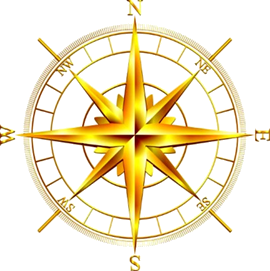Maritime Law Center

1198 Pacific Coast Hwy, D347, Seal Beach, CA 90740
Phone: 562-592-9350 / Fax: 562-684-4459
NEW Email: mikevaughn1997@gmail.com
Our firm works with individuals, corporations, shipping companies and universities in selling and acquiring, transferring and evaluating vessels in all parts of the world.
ARTICLE
[How We Practice]
[Legal Services]
[E-Books]
[Forms]
[Library]
[A.I.S.]
[Vessel Arrest]
[Buyer's Inspectn]
[Charter Financing]
[Choose the Right Boat]
[Closing the Sale]
[Charter Value]
[Escrow Services]
[Mediation]
[Ferry Operations]
[Good Faith Deposit]
[Jones Act]
[Maritime Finance]
[Maritime Lending]
[Rights & Remedies]
[Maritime Terms]
[Ships Evaluation]
[Non-Self Propelled]
[Norwegian Sales Forms]
[Sale, Acquisition]
[CA Sales, Use Tax]
[Tax Man]
[Dec Independence]
[Things I Learned]
[YouTube]
[FAQ]
[About Us]
Ferry Operations for the 21st Century
by Mike Vaughn
The last few years have seen a resurgence in the use of ferry transportation. New routes are being created to by-pass crowded highways and deliver people and vehicles to populated centers.
Many state highway operations which were reducing ferry operations during the 1960’s and 70’s, have begun to accept the expense of such operations as one more source of providing adequate ways of meeting transportation needs.
There is a wide variety of ferry types. Generally speaking, a ferry is any vessel that makes a voyage between two or more fixed points on a scheduled basis. The ferries themselves range from small 20 or 30 person flat barges to very large, ocean-going ships.
We generally divide the subject into a few distinguishable categories:
- Passenger Ferries
- Vehicle/passenger ferries
- Night passenger ferries
- Night vehicle/passenger ferries
- The difference between a vessel designated as a night ferry is that it will ordinarily have some type of sleeping quarters for the passengers. These quarters may range from large chairs or sleeping couches to full cabins with all amenities of a cruise ship.
Sizes may range from as small as 30 feet to more than 600 feet in length.
FAST VS. SLOW FERRIES
Speed has always been the dream of some, but not all ferry operations. With the development of high speed ferries the dream has to some extent come true.
High speed ferries are usually catamarans driven by jet drives reaching cruise speeds in the mid-30 knots. Mono-hull ferries now are also reaching the 30 knot range. However, speed is a function of power to weight and sea conditions.
The fact that a vessel may reach 35 knots does not mean that it will operate efficiently at that speed in all sea conditions.
Typically in the United States catamaran ferries now operate in the 25 kt to 35 kt range. The sizes vary from 49 passengers to 500 plus passengers. Aluminum has been the material of choice due to the ease of fabrication and the weight saving that it allows. Today a catamaran ferry in the 350 to 450 passenger size will cost from five million to ten million dollars depending upon the speed and accommodations as well as other design features.
The fuel consumption of a high-speed ferry also contributes to the comparatively high cost of operation. However, the speed of the ferry is directly proportionate to the percentage of the market it may capture. It is very important to have a careful study done of the proposed route and market prior to deciding upon the type of ferry needed.
Slow ferries are generally considered to be vessels operating at less than 18 knots. Generally, what we consider to be slow may be very adequate for the market. Slow ferries typically carry very large numbers of passengers on each trip. Where a 130’ fast catamaran may carry 300 to 400 passengers, a slow ferry of an equal length may carry 700 to 900 passengers and consume only a fraction of the fuel that the fast ferry will require.
A trend in the last year has been to place slow ferries more in the “cruise business” by selling not just the destination but also the cruise itself. The slow vessel competes not on speed but on the experience of the trip. This has been reasonably successful in areas were tourists visit more for the scenery that just to get across the distance.
Each type of vessel has unique and marketable qualities. However, a great deal of thought must be applied to determine which will best serve the market.
Next month we will discuss ocean-going ferries and how they are affecting the world market.
END